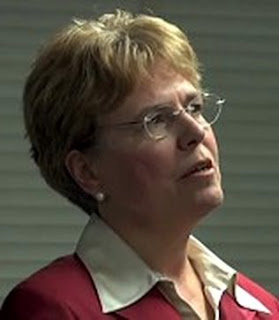Jane is an environmental scientist and marine ecologist and biologist. She graduated from Colorado College, received her Ph.D. from Harvard University in marine ecology, taught at Harvard for two years, and has been on the faculty at Oregon State University since 1978.
Her expertise includes interactions between humans and the environment: biodiversity, climate change, sustainability science, ecosystem services, marine reserves, coastal marine ecosystems, the state of the oceans and of the planet.
She lead an interdisciplinary team of scientists who study the marine ecosystem off the west coast of the U.S. This PISCO team is learning how the ecosystem works, how it is changing and how humans can modify their actions to ensure continued benefit from ocean ecosystems.
She helped lead a panel created by Gov. Ted Kulongoski to develop an Oregon strategy on climate change.
She is Past-President of the International Council for Science and a former President of the American Association for the Advancement of Science (AAAS) and the Ecological Society of America. She was a Presidential appointee to two terms on the National Science Board which advises the President and Congress and oversees the National Science Foundation. She has often testifies before Congress, addresses the United Nations, or provided scientific advice to the White House, federal and international agencies, non-governmental organizations, religious leaders and leaders of business and industry. She co-chaired Oregon Governor Kulongoski's Advisory Group on Global Warming that recommended actions the state should take to reduce its greenhouse gas emissions.
Jane founded the Aldo Leopold Leadership Program that teaches outstanding academic environmental scientists to be effective leaders and communicators of scientific information to the public, policy makers, the media and the private sector. She currently serves as Chair of the Advisory Board.
She participated actively in the Millennium Ecosystem Assessment (MA), a 5-year, international scientific assessment of the consequences of environmental changes to human well-being. Among other things, she co-chaired the MA's Synthesis for Business and Industry.
Jane is a Founding Principal of COMPASS, the Communication Partnership for Science and the Sea, a collaboration among academic scientists, communication and media specialists that communicates academic marine conservation science to policy makers, the media, managers and the public.
8 of her publications are "Science Citation Classics"; she is one of the "most highly cited" ecologists in the world (top 0.5%). She is an elected member of the National Academy of Sciences, the American Academy of Arts and Sciences, the American Philosophical Society, the Royal Society, and the Academy of Sciences for the Developing World.
She served on the Pew Oceans Commission and now the Joint Oceans Commission Initiative (a merger of the Pew Oceans Commission and the U.S. Commission on Ocean Policy). She is a Director or Trustee of the Monterey Bay Aquarium, SeaWeb and Environmental Defense; Trustee Emerita of the David and Lucile Packard Foundation and a former Trustee of the Royal Swedish Academy of Sciences' Beijer International Institute for Ecological Economics and the World Resources Institute.
Jane has received numerous awards including a MacArthur ("genius") Fellowship, a Pew Fellowship, eight honorary degrees (including one from Princeton University), the 2002 Heinz Award in the Environment, the 2003 Nierenberg Prize for Science in the Public Interest, the 2004 Environmental Law Institute Award (the first scientist to receive this honor) and the 2005 American Association for the Advancement of Science's Award for Public Understanding of Science and Technology.
Dr. Lubchenco received the Heinz Award for the Environment for her role in broadening awareness of the importance of biological sustainability to the future of humanity, her efforts to raise the visibility of ocean issues, her commitment to opening the lines of communication between scientists and citizens, and her pioneering concept of the social contract that exists between science and society.
Her Education includes a Bachelor's in biology, Colorado College, 1969; master's in zoology, University of Washington, 1971; doctorate in ecology, Harvard University, 1975
Jane is married to Bruce Menge, a marine ecologist; and has two two sons.
SOURCES:
- Jane Lubchenco From Wikipedia, the free encyclopedia
- Jane Lubchenco - Distinquished Professor of Zoology
- Obama picks OSU professor to head science agency NOAA
- Jane Lubchenco OSU
- The Heinz Awards, Jane Lubchenco










